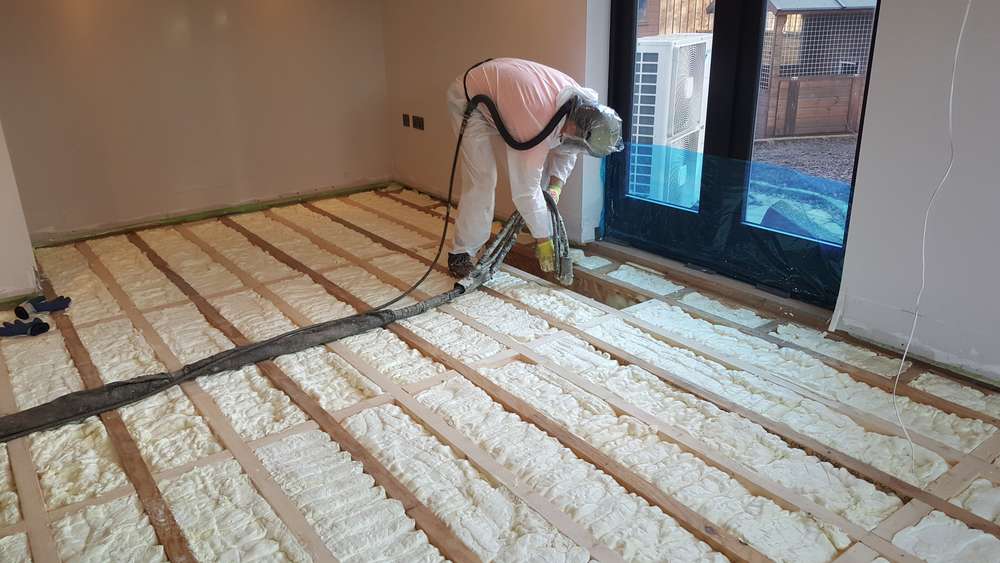Attic Spray Foam Insulation Dunboyne
3 Bed Semi Attic Insulation Dunboyne

Attic Insulation Dunboyne
Spray foam works in many different conditions. Spray foam will benefit roofs and windows as well as interior and exterior walls.
Spray foam insulation can not only keep your house warm in winter, but it will also keep you cool in summer. It allows moisture-laden air, such as from the basement, to escape thanks to its structure and cell structure.
Benefits of Spray Foam Insulation for your home
Other uses include: commercial and industrial buildings; agricultural farms houses; sheds; shipping containers; vessels; and the refrigeration industry.
It also forms an airtight seal around your home to prevent rain and cold wind from entering. Other insulating products available today are far less effective in this regard. They allow heat to escape your home.


Cost Price Of Spray Foam Insulation
Spray foam insulation is without doubt the most efficient insulating material today. It is more efficient than traditional insulating materials like fiberglass, rock wool and cellulose.
Spray foam insulation is excellent as a sound barrier. It reduces outside noise by up to 50%. This is particularly beneficial if the home or business is located near an airport or densely populated city.
Insulate Your Dunboyne Property Properly
It is often used to reduce sound travel from one room to another or between floors within the walls. It’s especially effective on bathroom walls because noises from flushing toilets or showers can make it a nuisance.
It is simple to use and won’t cause any disruption to daily life.
It is possible to insulate a traditional Irish house in one day.
The pipes are also protected and insulated to reduce noise.

If you plan on using the loft/attic as storage space, you should lay boards above the joists. You won’t get thick insulation if the insulation isn’t thick enough if the insulation is only applied between the joists.
It reduces sound transference by up to 50% when used in walls, attics and roofs. The dense composition of the material and the application process result in a completely airtight enclosure. It blocks sound from outside, including traffic, pedestrianised streets, and areas near airports.
Spray foam insulation also stops sounds from within a structure being transmitted to floors below, above, or into adjacent rooms. Spray foam insulation could reduce the amount of noises generated by structures such as running showers or washing machines.
Spray foam insulation, which is flexible and packed with millions of tiny air bubbles, absorbs vibrations from the floor and wooden members. It also inhibits sound transfer through the floor. Spray foam insulation reduces airborne noise transmission by sealing all cracks and crevices.
Spray foam insulation can also dampen, if not completely eliminate, sounds from floors such as water moving through pipes. It completely surrounds the pipes, keeping them in place and preventing them from rattling. It also prevents hot water from flowing through the pipes, which can cause the wooded beams to creak, crackle and expand.
It also stops heat from escaping to the upper levels, which makes the lower floors cooler and requires more heat to keep them warm.
If the loft has no condensation or damp problems and is easily accessible, insulation will be very easy.
Uninsulated homes lose 25% of their heat through their roofs. Insulating your loft or attic is a great way to cut heat loss and save money on heating.
You can use mineral wool insulation rolls if you have easy access and your loft joists remain regular. The insulation begins by placing the first layer between the joists. These are the horizontal beams that form the loft’s floor. A second layer is then laid at right angles to cover and seal the joists.
You can raise the floor to get sufficient insulation. You can install timber battens on the floor joists. Or, you can use purpose-built legs made of plastic that fit on the leg and support the floor. To prevent condensation, make sure there is a vent between the insulation boards and the insulation.
When you attach the boards to the board, make sure not to squash the mineral wool. This will lower its insulation.
Insulation blocks heat escape from living spaces. Therefore, loft insulation will cool your loft space, which can lead to condensation or damp problems. You may need to increase ventilation if you install loft insulation yourself.
The insulation can be fitted between and over the roofing rafters, which are the flat timbers that support the roof. Either rigid insulation boards can be carefully cut to the required size or foam insulation can be sprayed between each rafter.
Some companies may offer to repair your roof with foam insulation. This is not something that we recommend. You must ensure that your roof is in good condition before you apply insulation.
If you are looking to use your loft as an indoor heating room, you can create a space in the roof.
If you are planning to use your loft for living, or you already have it, you will need insulation between the heated space and unheated area.
Your house must allow air to flow freely in order for it to stay fresh, dry, and healthy. A professional installer will ensure that your house does not have any obstructions or seals. Do not cover grilles, airbricks, or vents if you are DIY-insulating.
If the loft is not easy to access, a professional can install blown insulation. This specialist will use special equipment that can blow insulation into difficult spaces. They can use mineral wool fibre, treated with cellulose, or polyurethane.
Flat roof insulation can save you as much on heating costs than loft insulation. The size of your flat roof will affect the savings.
You can probably insulate your loft yourself if it is accessible and does not have damp problems. A professional installer is required for cases where damp problems are present or complex insulation systems are needed.
Cooler air could cause cold draughts to enter your loft hatch due to insulation. Install an insulated loft hatch to prevent cold draughts.
Insulating the ground floor of your property is a great option to keep it warm and also lower your emissions.
Insulating a loft is an effective way to lower heating bills, be more efficient and warm your home in the winter. Even if the loft already has insulation in place, it is essential to use it at its best.
Loft floor rolls – These are the more traditional option. They are rolled along the loft’s floors. They are quicker to lay than insulated flooring boards. These rolls can be used to create top and base layers. To create a storage platform, they can be boarded using stilts.
These suggestions and recommended items aren’t included in this article’s list of materials or tools. Before you start insulation of your loft floor, make sure you have read all instructions.
Even though insulation is often present in homes, some may not be effective. This could happen if the insulation isn’t topped up regularly or has been compressed by storage board. Sometimes, loft floors can be as small as 25mm in depth for older properties.
There is no need to remove loft floor insulation. You can simply add one or two layers of insulation to the loft floor to achieve the recommended amount. The article will provide more details about how much you should be consuming.
Your loft floor’s spacings will dictate the width of your roll. This is because insulation will be rolled between the joists. We recommend selecting one that is close to your joist spacing. It will reduce the need to trim.
The insulation must meet the requirements for thermal resistance. Another alternative is to measure the thickness of insulation if you only lay loft rolls. Refer to the section titled “How to calculate the loft floor insulation thickness required” for more details.
Areas We Service


Parkhill, Dublin
01 5255297

